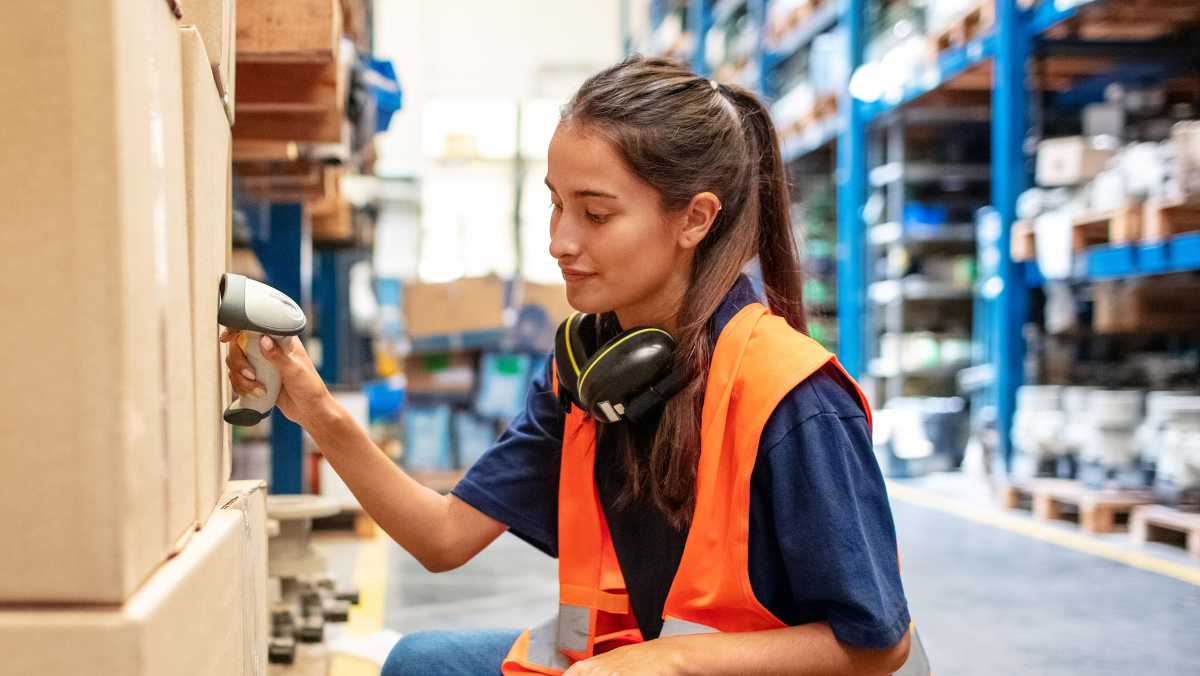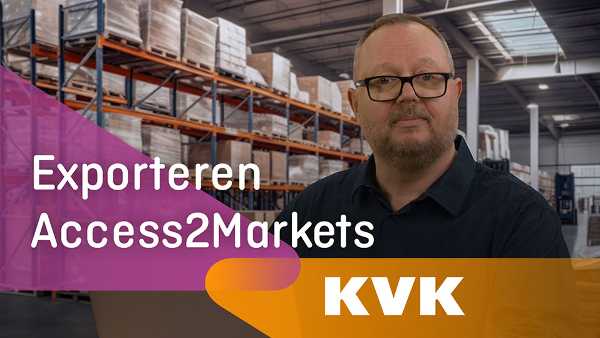Step-by-step export plan

- Sandra Visser-Meijer
- Step-by-step plan
- Edited 23 October 2025
- 9 min
- Managing and growing
- International
You want to be well prepared before you start trading on the international market. Use this step-by-step plan for guidance. Learn how to prepare your exports down to the last detail. From researching the market to delivering your product to your foreign customer. This will give you a clear picture of the market and what you need to do.
Starting to export takes time, money, and preparation. Every country has its own laws and regulations. When you complete your step-by-step plan, the outcome will differ per country and product. Do you see opportunities in another country or with a different product? Then you need to start preparing again and complete a new step-by-step plan.
1. Research the export market
Entering a new foreign market takes more time than doing business in your home market. There can be 2 to 3 years between making export plans and sending your first invoice to a foreign customer. If you do not yet know which country you want to export to, first which export markets offer the highest number of opportunities. Make a first selection of 3 to 5 countries that seem interesting to you and compare them before making your choice.
2. Check any import restrictions
You are not allowed to export all products to other countries. Some countries have import bans on certain products. There may be an export ban from the EU in place. For example, a country will only allow cars built after a certain date. Pornographic material is not allowed in Saudi Arabia. Or there is a boycott, also called an international sanction. For example, Russia's boycott of European agricultural products. With the of your product, you can check in Access2Markets whether import restrictions apply to your export country. Or whether your foreign customer needs an import permit. Your customer will usually know whether this is the case as well.
Inside the EU
When you deliver to another , the free movement of goods applies and there are fewer restrictions. Sometimes national rules apply, such as product requirements or naming ingredients on labels. The EU sets for the trade of certain plants or plant products between member states. Additional provisions for an EU country may apply to agricultural products. More information can be found on the website of the Dutch Food and Consumer Product Safety Authority (NVWA).
3. Find out local product requirements
Your customers must be able to use your products safely. General apply within the EU or EEA. These are legal requirements in the field of safety, health, and the environment. In addition to general requirements, specific also apply. These are legal regulations for specific product groups. For example clothing, cosmetics, and foodstuffs. All EU countries have a Product Contact Point. These provide information about product requirements and the applicable standards in the EU member state.
Outside the EU
Goods that meet the EU requirements get CE , for example. But a product with CE marking does not automatically meet the requirements of countries outside the EU. Each country has its own laws and regulations. Therefore, always check which product apply in your customer's country. In Access2Markets you can use the HS code to find which product requirements and procedures apply per country.
Adjusting the product
Sometimes you have to adjust your product for the export market. The foreign market usually demands product information in the national language. You then have to translate your packaging, labels, and user instructions. A technical adjustment, an additional certificate, or a local test may also be required. Think of the differences in voltage, power sockets, and plugs worldwide, for example.
4. Choose your entry strategy
You can enter an export market in different ways. Delivering to foreign consumers through e-commerce with your own or via a sales platform is an accessible way. Businesses in technical sectors often work with a wholesaler, distributor, or commercial agent. A distributor or wholesaler can hold stock for you and provide technical support and service to your customers.
You can also do everything yourself. Sell directly from your Dutch branch to your foreign customers or open a foreign . Doing everything yourself makes you less dependent on cooperation with others. Working without a partner often entails greater financial risks and investments in time and personnel.
5. Find partners
You can find or customers in different ways. Via incoming and outgoing trade missions for example. Or by visiting or participating in trade fairs abroad. Many of these meetings also take place online. Check a foreign business partner before working with this unknown party. For example, a credit rating agency can find out for you whether a potential partner is financially stable. Your choice of partner is often a combination of gut feeling and checks on paper.
Think about your requirements
Be selective when it comes to partners. Make sure you can make a choice. First, draw up a list of requirements that your future partner must meet. Think of assortment, product knowledge, and a local network. Then talk to several parties. Visit the country and your potential partners before making your choice. This way, you get an idea of the culture and the way of doing business in that country. Also look closely at local labour and environmental conditions. If you supply larger businesses in the Netherlands , you need to know how your product is made and by whom.
The party that meets the requirements best and feels right is the party to begin working with. Be careful about giving away exclusivity. You still have that possibility after a partner has delivered the first results. Sometimes a partner wants to ban products from the market and therefore asks for exclusivity.
Want to discuss your list of requirements with an adviser first? Then call the KVK Advice Team on 088 585 22 22.
6. Determine your export price
You calculate your differently than your price for Dutch customers. You have extra costs for transport, customs clearance, and the translation of your labels, for example. Or for local inspection of your product. Extra costs that you do not incur for Dutch customers.
Before you make agreements with your foreign customers or partners, you need to know what your costs are and what profit margin you want to achieve. Also look at the price of other providers on your export market and consider this informatioon in your pricing. Work with a uniform export price and standard agreements. This prevents discussions between partners and customers in different countries.
7. Determine the transport
comes with extra costs and risks, because goods are often shipped by more than one means of transport. This is called transhipment. The type of product and the order volume help determine how you will transport the goods. Also look at the costs, and how quickly your customer wants to receive the order.
Speed and volume
If your customer wants to receive an order quickly and pays the extra costs for this, choose an express delivery. Smaller shipments with only a few products or perishable goods can be sent by air. If you are shipping goods with a large volume or weight, sea transport is cheaper. Transport with multiple transhipments via different means of transport and transport companies can be arranged by a .
Clarity
Determine at an early stage how you will transport the shipment. The transport costs come on top of your export price, and you do not want your profit margin to suffer. Mention the additional costs in your quotation. This way, both you and your customer have clarity. With Incoterms® you agree with your customer who will arrange the transport and to which location. You also use these international delivery conditions to agree on who will arrange the insurance.
Freight and insurance costs
Sometimes when requesting a quotation, your customer already indicates under which Incoterm® they want to receive delivery. When you arrange and pay for transport and insurance, you pass these costs on to your customer. You can do so in 2 ways. You state the costs separately on the quotation and final invoice, or you include this amount in your product price. This last way is more work for you. Freight charges vary per transaction. They depends on the mode of transport, distance, and size of the shipment. This means you have to calculate prices again for each quotation.
Read how Ron van de Pavert from BrimaPack arranges the transport of his machines to countries outside the EU.
8. Take out insurance
International business comes with extra risks. For product liability or transport, for example. You can cover these risks by taking out insurance. That is not mandatory, but it can save you a lot of trouble. Find out which risks you run, and if you are insured against them.
9. Be aware of import duties
Within the EU, free movement of goods applies. Your customer does not pay any import duties for your products. You put 0% VAT on your invoice. Your customer pays the VAT in their own EU country. There are exceptions to this (Belastingdienst, in Dutch).
Outside of the EU
If your customer is located in a country outside the EU, they usually pay import duties when they import the goods. In the Access2Markets database you will find the rates of import duties at . This database also contains other import taxes and the necessary documents. Consult the International Trade Centre (ITC) Market Access Map for countries not listed in Access2Markets.
Incoterm® rule DDP
If your customer asks for a DDP delivery, you as the selling party will have the highest number of obligations. At the same time, this provides the most convenience for your customer. Under Incoterm® DDP you as a seller are responsible for clearing the shipment in the destination country. And because of this you have to pay any import levies, such as import duties and import VAT. You may need a registration in the destination country for this. Consult with your accountant what you need to arrange for this.
10. Determine the payment method
Doing business with customers abroad is riskier than in the Netherlands. Because you speak a different language, the interaction is different. Your customer is also further away and because of that distance it can be more difficult to get your invoices paid. Therefore, agree in advance with your customer how they will pay.
If they pay in advance, you as an exporter run no risk. Your customer must then trust that their order will be delivered. They may have difficulty with this, especially with a first order, because trust still has to grow. Payment based on documents provides certainty for both parties. For example, with a Letter of Credit (L/C). Let your bank advise you on which payment method best suits the transaction.
11. Make a quotation
Foreign customers or partners like to receive a quotation in advance of their first purchase. This way, your customer knows exactly what the price, delivery time, currency, or payment method is for any order. Clearly state in your quote which costs you pass on to your customer. Please refer to the general terms of delivery in your quote. If you have a good relationship with your customers or partners, you often receive orders directly based on agreed prices. It is then unnecessary to make an offer.
12. Record appointments
The Dutch like to arrange things quickly, in a no-nonsense manner. Your export customer often thinks and works differently than you are used to in the Netherlands. Make sure to record appointments by email. Also confirm your telephone appointments by email. In case of any problems, this ensures that you always have a file with agreements to fall back on.
Contract
You are going to close a deal or appoint a local partner. Record the agreements with your customer or partner in a contract or in your general delivery conditions. For one-off deliveries, your customer can sign your quote for agreement. This is not mandatory, but it is sensible. As a selling party, you usually draw up the contract in a language understandable to your customer. Engage a lawyer who will check the contract before it is signed.
Model contracts
Sign a distribution agreement if you are going to work with a distributor or commercial agent on a long-term basis. You can order English-language model contracts at the International Chamber of Commerce (ICC) for a fee. Drawing up a contract is customised work. If in doubt, consult a legal advisor.
13. Inventory your export documents
In addition to an invoice, packing list, and , you regularly need export documents when exporting goods. Especially if you export products to countries outside the EU. For shipments to other EU countries, a transport document with invoice and packing list is usually sufficient. Which additional documents you need depends on your products and the destination country.
Logistics service provider
Finding and applying for the right export documents takes time. Especially when you do this for the first time. You can also leave this work to a logistics service provider, such as a freight .
14. Customs declaration
If you export to another EU member state, you do not have to go through customs, though there are (in Dutch). When you export products to countries outside , you must declare the goods for export at Dutch Customs. An import declaration is then made in the country of arrival. Depending on the agreements made, you or your customer are responsible for the import declaration. A carrier can help you with this, both with the paperwork for the export from the Netherlands and the import into the destination country.
Administration
When exporting products to non-EU countries, your records must comply with the general administrative obligations that apply in the Netherlands. In addition, extra administrative obligations apply. For example, you must be able to demonstrate in your business records that the goods have left the EU. This can be done with a copy of the consignment note or invoice from the carrier. If your records (in Dutch) are in order, you can avoid possible additional assessments during an inspection.


